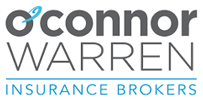The legislation recently passed in the New Zealand Parliament is due to be enacted on 4th April 2016 and will change the landscape of Health & Safety in New Zealand. It has been defined as the biggest shake-up in decades with greater responsibilities and liabilities to fall upon Owners and Directors of businesses across all industries – large and small.
A greater requirement for Managers and Executives to be aware of Employees and Workers workplace environment is absolutely required. Business’ must display Best Practice and will come under the scrutiny of the Ministry of Business Innovation and Employment (MBIE) and new Crown entity WorkSafe NZ (formerly the Department of Labour). Existing Health & Safety Policies and Procedures will not be sufficient to fulfil the requirements of the new legislation.
A modified version of the Australian work health and safety model has been used as the template. As long as New Zealand doesn’t end up like certain states in Australia where each business must have dedicated bureacracy for pumping out safety information and implementing stringent working guidelines, then the changes should be accepted. What we don’t want is HSE slowing growth.
The establishment of WorkSafe New Zealand as the regulatory body communicates a strong message of the government’s intent to ‘tidy up’ health and safety across all sectors – especially in those areas of high risk. It has been the well-publicised mining, forestry and port sectors which are a particular focus.
The government has purposely targeted a high calibre of staff to run Work-Safe. This is reflected in an increase in spending committed to the new model compared to that under OSH.
Together with stronger penalties and wider enforcement tools for non-compliance, it is intended that the regime will see significant improvement to New Zealand’s health and safety model. Fundamentally, however, the process of managing hazards and controls within the business operation remain unchanged. The basic principles of good risk and safety management have always needed to be adhered to.
The difference now is that there will be explicit responsibility on managers, company directors and sub-contractors to manage risk and the safety of their workers. Pro-active and functional management of risk and the safety of those in the workplace naturally make’s good business sense. It is proven that investment in the management of risk improves productivity, staff engagement, as well as the business’s brand and reputation.
In summary, the reform sees:
- Clear, consistent guidelines and information for business re their Health and Safety
- Funding for WorkSafe NZ to strengthen enforcement and education.
- A focus on high-risk areas.
- Stronger penalties, enforcement tools and court powers.
The introduction of WorkSafe NZ and its dedicated mandate is being closely observed by the insurance industry. With stronger enforcement and policing, there are already signs of increased Statutory Liability (Fines and Penalties) insurance claim activity following unintentional health and safety breaches.
As NZ’s specialist insurance provider to the Transport and Logistics industry, O’Connor Warren are acutely aware of the increased risks and potential claims that will now be realised. We are carefully reviewing each of our client’s requirements and levels of cover. In summary, we are generally recommending increases to the level of cover our business owners previously held.
In regards to premium charges, we are closely monitoring how insurers price policies applicable to Health & Safety risks, whilst ensuring the best possible coverage and terms are provided to our clients and prospective clients.
We will all be watching with interest as WorkSafe NZ gets into its work.
Eamon O’Connor
Director – O’Connor Warren Transport

